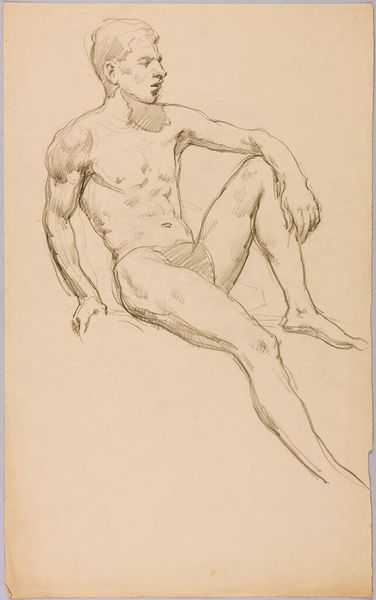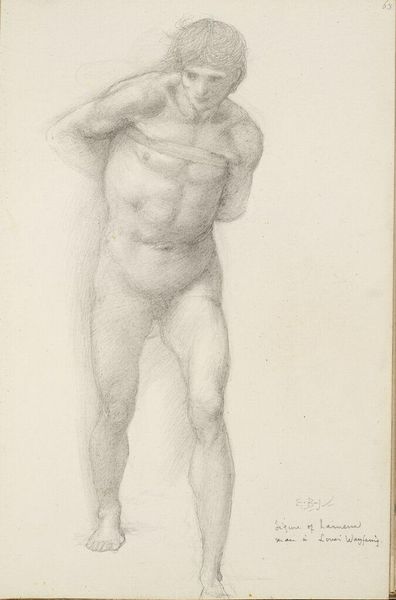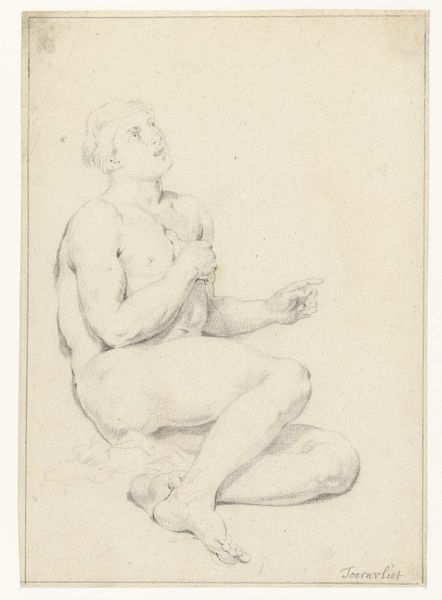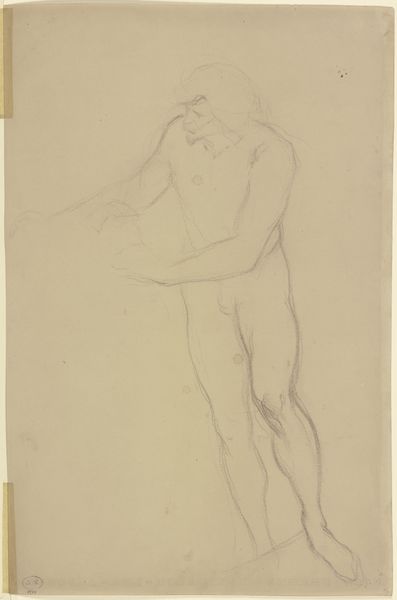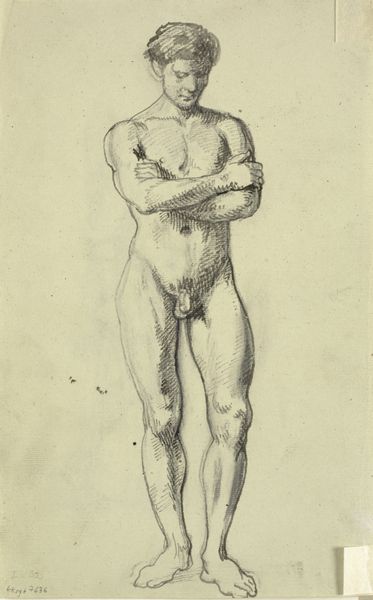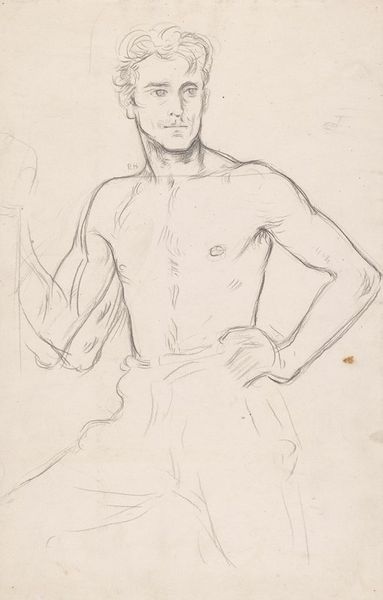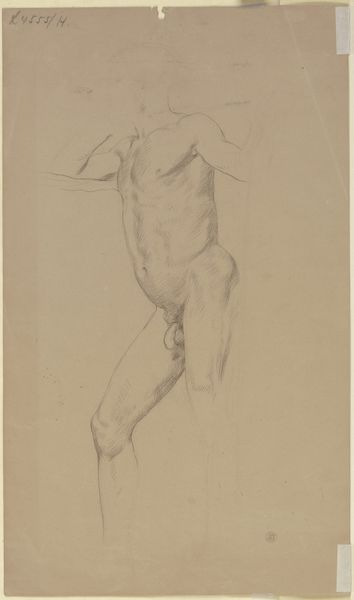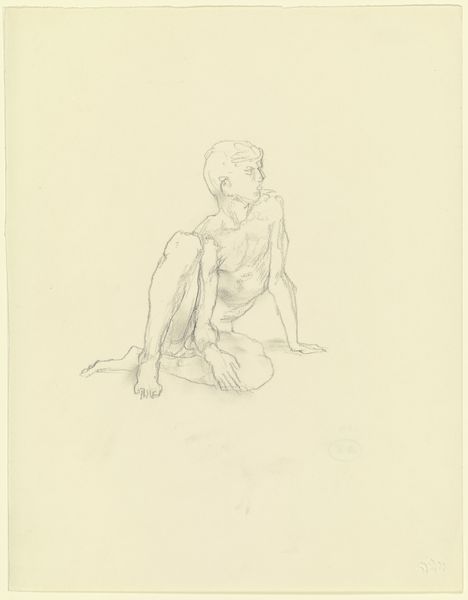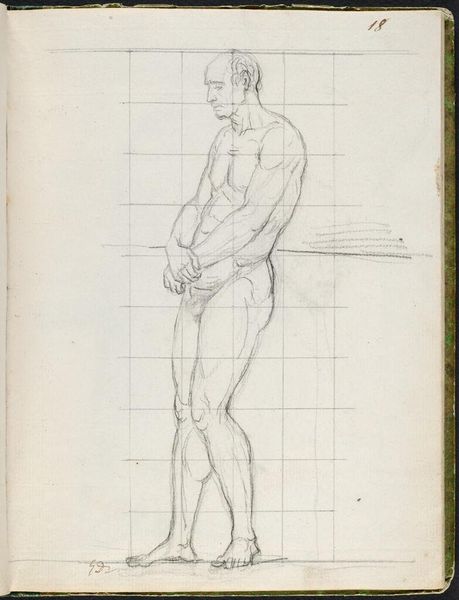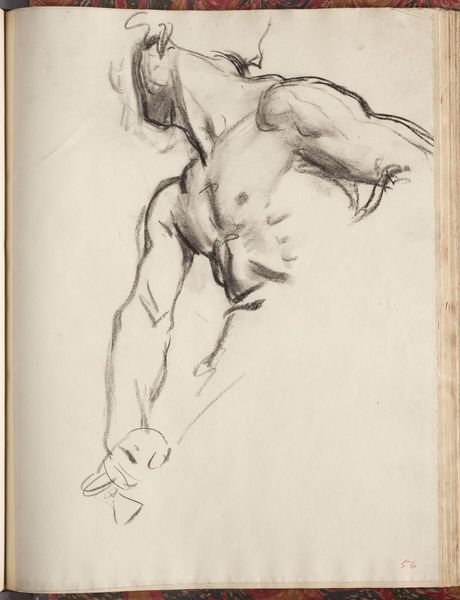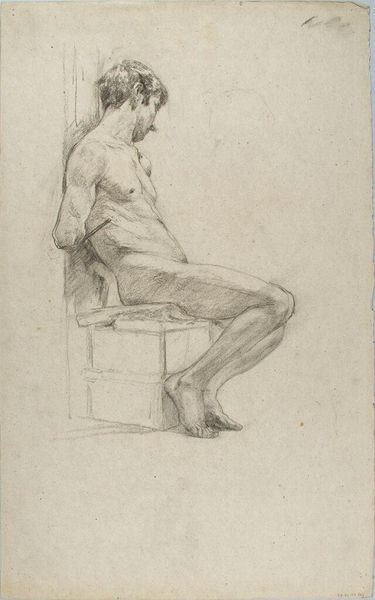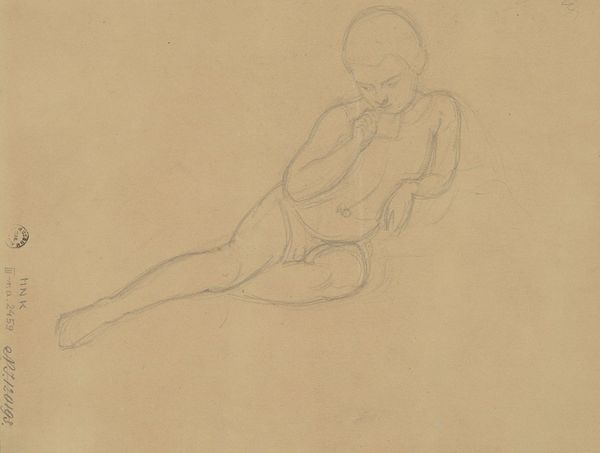
drawing, paper, pencil
#
drawing
#
pencil sketch
#
figuration
#
paper
#
pencil drawing
#
pencil
#
pencil work
#
nude
#
realism
Dimensions: height 370 mm, width 270 mm
Copyright: Rijks Museum: Open Domain
Curator: The delicacy of line here is striking. We're looking at "Zittend mannelijk naakt, van voren" – "Seated Male Nude, Front View" – a pencil drawing on paper by Charles Despiau, dating sometime between 1884 and 1946. Editor: My first impression is one of vulnerability. The unfinished quality, the lightly sketched figure, conveys a certain rawness. It lacks any superficial idealization, focusing instead on the form itself. Curator: Indeed. And thinking about the material – pencil on paper – is crucial. Despiau uses it economically, with the varying pressure of the pencil creating shadow and volume. These choices, along with the mass-produced nature of pencils and paper during Despiau’s time, signal a specific kind of accessibility that aligns this piece more with artistic practice than commodity production. The pose also suggests informality, likely sketched during a private life-drawing session. Editor: Absolutely. Consider the composition – how the figure occupies the space. There’s an emphasis on the torso, built of careful parallel strokes, lending a three-dimensional effect in what would be normally be seen as a flat application of graphite. Also note the relatively empty lower register that shifts the gravity toward the head and core, conveying physical tension within this contained space. The pose has this effect as well, legs drawn inward toward his chest. Curator: The interesting question to consider is the relationship between the artist and model and Despiau’s possible process as a sculptor that relied heavily on modeling from life to produce realistic and humanist portrayals of his subjects. Was the model paid or was the sitting done in return for something, maybe favors? Editor: Interesting! If you view this purely formally, one might analyze the work's realistic intent – the meticulous delineation of muscles, the attentiveness to light and shadow and surface variation. Curator: Though "Realism" in its conventional use is perhaps misplaced here as realism for Despiau and others of his generation meant something radically different than an exercise in replicating appearance. One has to think about the economic circumstances for a model and also the gender dynamic. The artistic decisions were more shaped by those two factors in addition to Despiau's prior work as a sculptor and medalist. Editor: I find this very engaging, bringing out questions about its materiality. Thanks for this perspective, these two things help inform a fuller picture!
Comments
No comments
Be the first to comment and join the conversation on the ultimate creative platform.
